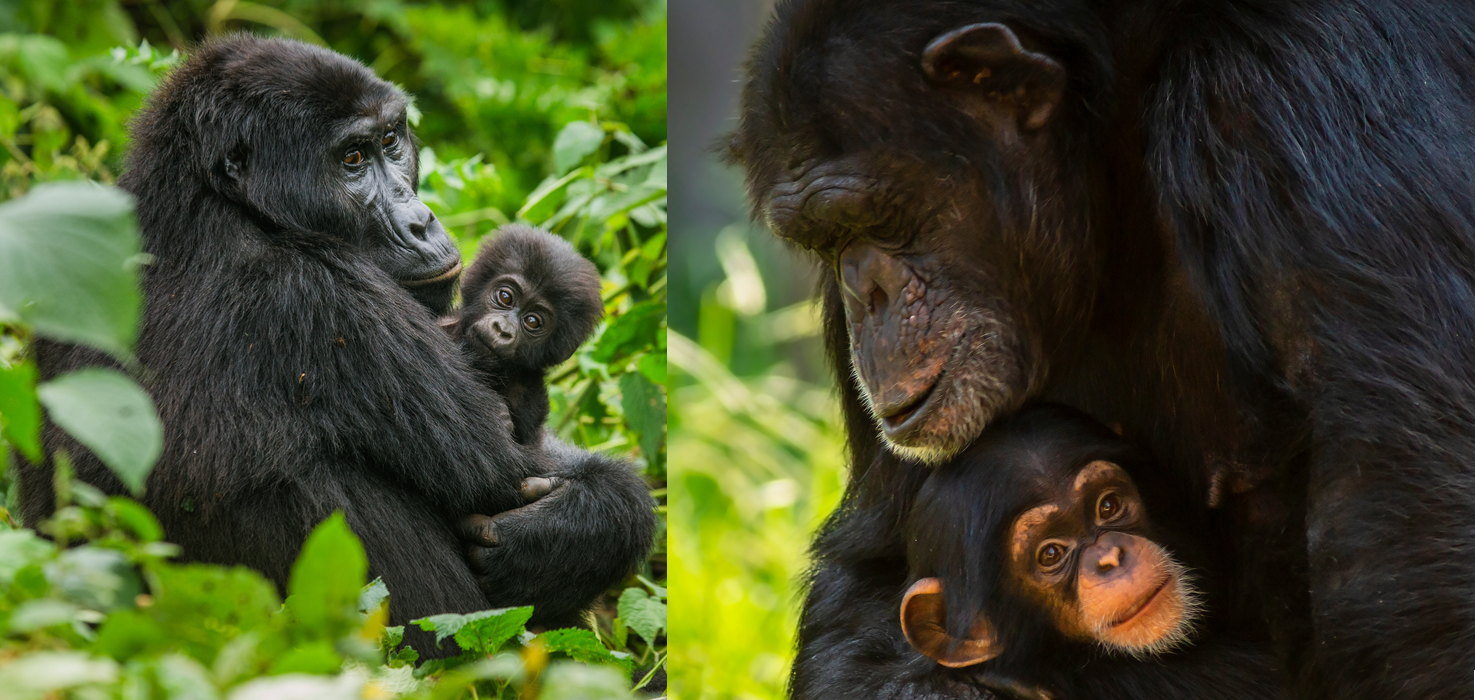In decades gone by, rumors swirled around the forests of Africa that spoke of a strange chimpanzee-gorilla hybrid, known as koolakamba. They’ve been the subject of a small handful of studies since the 19th century, but hard proof – or even sturdy evidence – of their existence has continued to allude scientists.
One of the more recent mentions of koolakamba (aka kooloo-kamba) can be found in a 1984 paper by biologist Brian T Shea in which he outlines the “long history of controversial debate” that’s surrounded the existence of the purported hybrid species.
The study explains that the first written descriptions of koolakamba came from French-American explorer Paul Du Chaillu during his ventures across equatorial Africa in the 1850s.
In Du Chaillu’s 1890 account of the expedition, he wrote: “We had hardly got clear of the bashikouays [ants] when my ears were saluted by the singular cry of the ape I was after. ‘Koola-kooloo, koola-kooloo,’ it said several times. Gambe and I raised our eyes, and saw, high up in a treebranch, a large ape. We both fired at once, and the next moment the poor beast fell with a heavy crash to the ground. I rushed up, anxious to see if, indeed, I had a new animal. I saw in a moment that it was neither a nshiego-mbouvé [another of Du Chaillu’s apes calssificaitons], nor a chimpanzee, nor a gorilla.”
Du Chaillu said the large creature had a round head and black face with high cheekbones and a fine jaw that was significantly less prominent than the other apes he had come across. He also spoke to locals who said they called the animal “koolakamba”, most likely referencing its unusual vocal cries.
Du Chaillu never explicitly claimed the individual was the product of chimpanzee-gorilla hybridization, but speculation mounted in the years ahead.
The rumors gained traction in the late 1800s and early 1900s when more European colonizers started to describe the wealth of primates that inhabit Africa’s jungles. From the get-go, there was disagreement and confusion surrounding the number of species and sub-species to describe both chimpanzees and gorillas. Amid the messy debate, some speculated that some of the species they were coming across were, in fact, half-chimp and half-gorilla.

Spot the difference: a female mountain gorilla with a baby (left) and a female chimp with a baby (right).
Image credit: GUDKOV ANDREY/Shutterstock.com and Patrick Rolands/Shutterstock.com
European scientists even started to question whether some of the great apes that had been taken from Africa and placed in zoos were chimpanzee-gorilla hybrids. One great ape called “Mafuca” was brought from the Loango coast of Africa to Germany’s Dresden Zoological Garden in 1874. An especially large and “unmanageable” animal, numerous scientists were unable to agree whether she was a chimp or a gorilla, while some concluded she was an example of a koolakamba.
Such a hybrid could be possible, at least hypothetically. The natural range of chimps and gorillas have some overlap, most notably in equatorial African countries like Gabon, the Republic of Congo, and the Democratic Republic of Congo. In exceptionally rare cases, scientists have even documented lethal attacks by chimpanzees against gorillas, showing these animals have a clear cross-over.
Furthermore, advanced DNA testing has shown gorillas and chimps (not to forget bonobos) are extremely closely related, genetically speaking, meaning that hybridization isn’t out of the realm of possibility.
However, few primatologists today would even entertain the idea that a viable population of chimp-gorilla hybrids is secretly living in the wild.
In his 1984 paper, Shea explains that the legend of koolakamba ultimately stems from confusion. Early attempts to categorize the different species of gorilla and chimp were haphazard, plus they didn’t yet have the liberty of genetic analysis to validate their findings. The categorizations were also infused with the “Indigenous labels and folk taxonomies” of local peoples, which were frequently misunderstood and mistranslated.
Nevertheless, Shea argues that the recurring theory of the koolakamba does highlight some biological truths:
“Purported kooloo-kambas and other individuals claimed to be intermediate between chimpanzees and gorillas have generally turned out to be either large male chimpanzees or small female gorillas, and this fact leads us to what I consider the most important implication of this debate. The disagreement, confusion, variation, and use of intermediate or hybrid categories in both Western and Indigenous classifications reflects an important biologic reality,” he writes.
“Recent genetic investigations in the great apes have demonstrated this similarity. This congruence is so great that the production of viable hybrids remains a real possibility, although I emphasize that this has never been attempted in captivity nor demonstrated in the wild,” he added.
Source Link: Koolakamba: The Legend Of Chimp-Gorilla Hybrids That Roam Africa